
IN THE BACKYARD : Philadelphia early-August
Aug 16, 2020 | by Adrian Binns
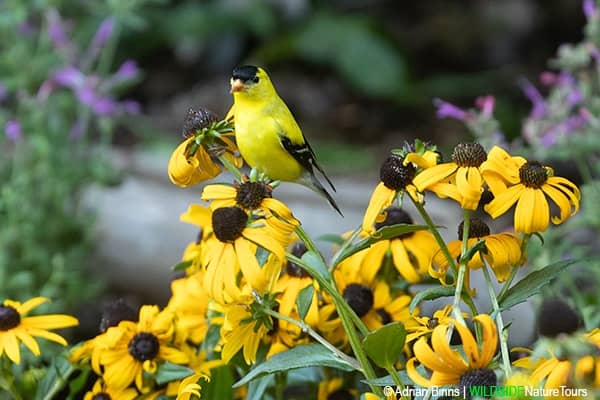
American Goldfinch
August is barely half over, but it’s already been a busy month in our metro-Philadelphia backyard. It’s wonderful to see birds take full advantage of the summer smorgasbord available in the garden. Black-eyed susans and purple coneflowers flowers provide fresh feed source to canary-yellow American Goldfinches. They are the last of our resident birds to nest, and their frequent forays into the garden are likely providing nourishment for ever-hungry young ones still in the nest.
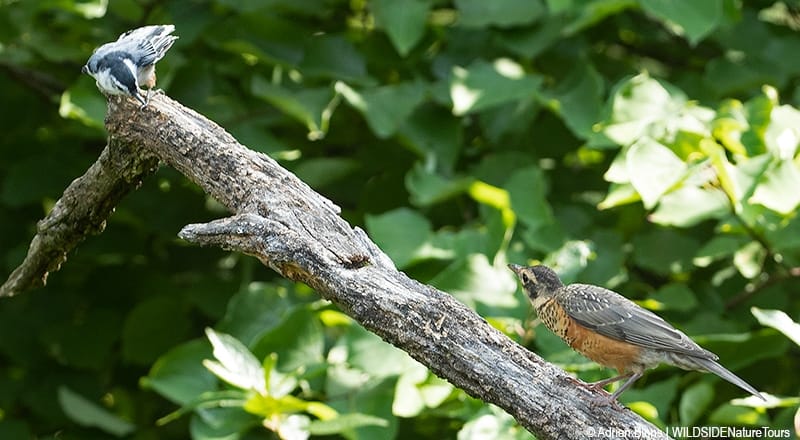
A White-breasted Nuthatch and juvenile American Robin face off
Young birds of multiple species are hopping and flying around the yard, begging to be fed by their hard-working parents. House Finches and House Sparrows are abundant, with voracious appetites that drain backyard feeders daily. Some older juveniles are beyond begging, but still frequenting the neighborhood of their birthplace, including Red-bellied Woodpecker, Downy Woodpecker, European Starlings, Northern Cardinals, Gray Catbirds and American Robins.
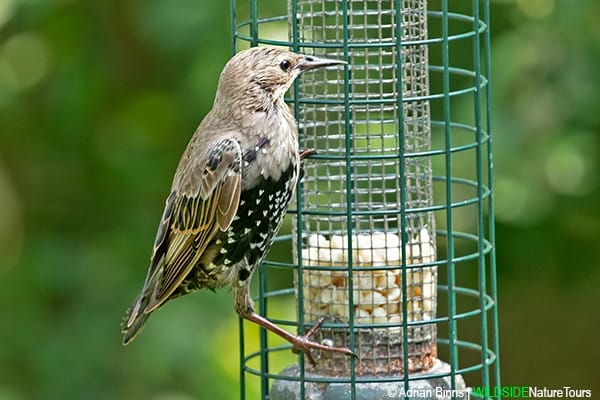
European Starling
I really like the earth tones and textured plumage of juvenile robins, whose eye stripe and spotted breast contrast with more cleanly-colored adults. Young, molting starlings are eye-catching during their transition from gray-brown juvenile to adult with green and purple iridescent colors with white spots. The molt happens unevenly, with bold patches showing in the lower belly, then gradually transforming the entire bird.
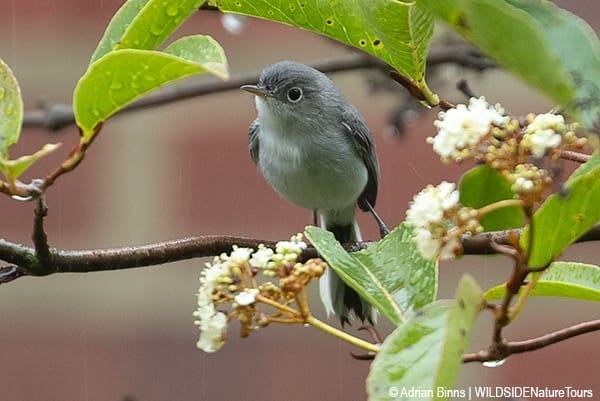
Blue-gray Gnatcatcher
The first days of the month, Tropical Storm Isaias moved northwards along the Atlantic seaboard, hitting the Philadelphia region at amazing speeds on August 4th. It brought strong winds and dumped 8″ of rain in a few hours, resulting in widespread flooding and power outages. We were fortunate to emerge unscathed, but sadly seemed to have lost two pairs of chipmunks and a pair of Song Sparrows – regulars before the storm, but not seen afterwards. As the stormed abated that day, a Blue-gray Gnatcatcher was seen busily gleaning insects from the wet shrubs in the yard.
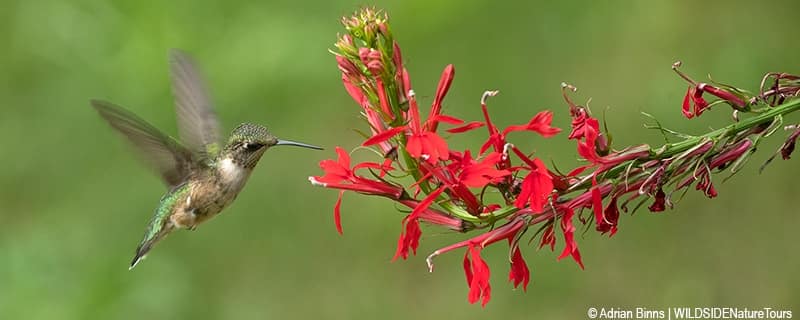
Ruby-throated Hummingbird
A number of Ruby-throated Hummingbirds are visiting our garden these days, with as many as three seen in a day. I can separate them by the markings on their gorgets when they come in to nectar on the cardinal flowers, or stop off at the feeder. I estimate that at least half a dozen individuals have been seen, mostly female or juveniles, as well as one immature male showing off a few red feathers on the lower part of one side of his gorget. It was interesting to witness one of them first going to the base of the tubular flower to try and pierce it right where the nectar is stored. In spite of never succeeding, at each flower she approached she began that way before venturing in the conventional way to get nectar.
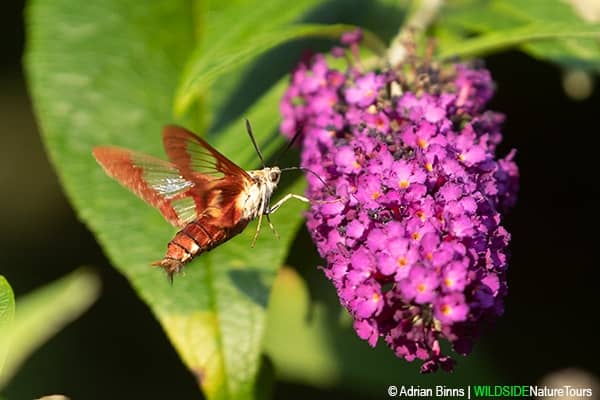
Hummingbird Clearwing Moth
At least one Hummingbird Clearwing moth, possibly more, have discovered our backyard, sometimes switching places with the hummingbirds that it resembles. The moth hovers with rapidly-beating wingbeats, probing its proboscis deep into the buddliea flowers, before backing out and trying another flower.
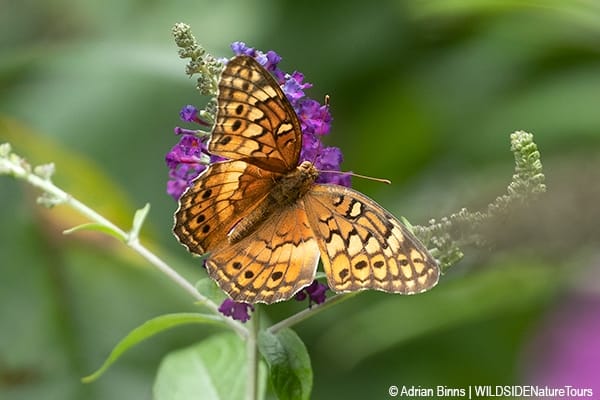
Variegated Fritillary
I was pleased to find a Variegated Fritillary one afternoon this week, a beautiful species of butterfly that ranges from Argentina to southern New England. It is more commonly found in our area later in the summer, and usually in expansive fields; it was a thrill to see one in my suburban backyard!
update Aug 1-15, 2020
































